#st. hedwig of silesia
Text
I know, I know:

1 note
·
View note
Photo

THE DESCRIPTION OF SAINT ELIZABETH OF HUNGARY
The Symbol of Christian Charity and Patron of Hungary
Feast Day: November 17
"As in heaven, Your will is punctually performed, so may it be done on earth by all creatures, particularly in me and by me."
Elizabeth of Thuringia, a symbol of Christian charity, an early member of the Third Order of St. Francis and is today honored as its patroness, the patroness of Hungary, the Archdiocese of Bogotá in Colombia, and of the Archdiocese of Jaro in Iloilo, was born on July 7, 1207 in Pozsony, Kingdom of Hungary (modern-day Bratislava, Slovakia), and is the daughter of King Andrew II of Hungary (Andrew of Jerusalem) and Gertrude of Merania, who was killed at the hands of the nobles led by Peter, son of Töre. Her mother's sister was Hedwig of Andechs, the wife of Duke Heinrich I of Silesia. Her ancestry included many notable figures of European royalty, going back as far as Vladimir the Great of the Kievan Rus'.
According to a different tradition, Elizabeth lived in the Castle of Posonium until the age of four. After she was brought to the court of the rulers of Thuringia in central Germany, Elizabeth was married at a young age in 1221 to Louis IV, Landgrave of Thuringia (Ludwig IV), the son of Hermann I, giving birth to three children, and a future union which would reinforce political alliances between the two families. She was raised by the Thuringian court and would have been familiar with the local language and culture. That same year, Louis was enthroned as landgrave. Their marriage appears to have been happy.
Her husband was fascinated by her charm and holiness. Whenever he went back from an official trip, he would always give her a present; and used to say that he would rather cast away a mountain of gold than give her up. In 1223, Franciscan friars arrived, and the teenage Elizabeth not only learned about the ideals of Francis of Assisi, but started to live them. Louis was not upset by his wife's charitable efforts, believing that the distribution of his wealth to the poor would bring eternal reward; he is venerated in Thuringia as a saint, though he was never canonized by the church.
It was also about this time that the priest and later inquisitor Konrad von Marburg gained considerable influence over Elizabeth when he was appointed as her confessor and later, spiritual father. When floods, famine and plague wrought havoc in Thuringia in the spring of 1226, Louis, a staunch supporter of the Hohenstaufen Frederick II, the Holy Roman Emperor, represented Frederick II at the Imperial Diet held in Cremona. Elizabeth assumed control of affairs at home and distributed alms in all parts of their territory, even giving away state robes and ornaments to the poor.
A few years later, Elizabeth's life begins to irrevocably changed forever. On September 11, 1227, when her husband Louis, en route to join the Sixth Crusade, died of a fever in Otranto at the age of just 26 years old, just a few weeks before the birth of her daughter Gertrude. Upon hearing the news of her husband's death and Louis' body returned to Germany, she reportedly said and cried: 'He is dead. He is dead. It is to me as if the whole world died today!'
His remains were returned to Elizabeth in 1228 and entombed at the abbey of Reinhardsbrunn. After Louis' death, his brother, Henry Raspe, assumed the regency during the minority of Elizabeth's eldest child, Hermann. After bitter arguments over the disposal of her dowry—a conflict in which Konrad was appointed as the official Defender of her case by Pope Gregory IX—Elizabeth left the court at Wartburg and moved to Marburg in Hesse.
Following her husband's death, Elizabeth made solemn vows to Konrad similar to those of a nun. These vows included celibacy, as well as complete obedience to Konrad as her confessor and spiritual director. Konrad's treatment of Elizabeth was extremely harsh, and he held her to standards of behavior which were almost impossible to meet. Among the punishments he is alleged to have ordered were physical beatings; he also ordered her to send away her three children. Her pledge to celibacy proved a hindrance to her family's political ambitions. Elizabeth was more or less held hostage at Pottenstein, the castle of her uncle, Bishop Ekbert of Bamberg, in an effort to force her to remarry. Elizabeth, however, held fast to her vow, even threatening to cut off her own nose so that no man would find her attractive enough to marry.
Sophie of Thuringia, Elizabeth's second child who will later on becoming one of the figures in the War of the Thuringian Succession and founder of the Brabant dynasty of Hesse, married Henry II, Duke of Brabant, and was the ancestress of the Landgraves of Hesse. Elizabeth's third and youngest child, Gertrude of Altenberg, was born several weeks after the death of her father; she became abbess of the monastery of Altenberg Abbey, Hesse near Wetzlar.
Thereafter, Elizabeth entered the Third Order of St. Francis (Secular Franciscan Order) in 1228, and promised never to marry again. Elizabeth spent her final years attending to the sick at the hospital of Marburg, which she had built, and supporting hundreds of poor people.
Perhaps Elizabeth is best known for her miracle of the roses. While taking bread to the poor in secret, she met her husband Ludwig on a hunting party. Ludwig, to quell suspicions of the gentry that she was stealing treasure from the castle, asked her to reveal what was hidden under her cloak. In that moment, her cloak fell open and a vision of white and red roses could be seen, which proved to Ludwig that God's protecting hand was at work. According to the Vitae, Louis was never troubled by her charity and always supported it. In some versions of this story, her brother-in-law, Heinrich Raspe, questions her. Hers is one of many miracles that associate Christian saints with roses.
Her health started to declined, and died on November 17, 1231 in Marburg, Landgraviate of Thuringia, Holy Roman Empire (modern-day Hesse, Germany). She was just only 24 years old. Elizabeth's popularity and legacy on caring of the poor was so great resulted in her canonization as a saint on May 27, 1235 in Perugia, Italy by Pope Gregory IX. There are two major shrines in her honor - in Košice, Slovakia and in Marburg, Germany.
Konrad commented these words: 'In spite of her many active works for the sick and the poor. I have seldom seen a more contemplative woman.'
#random stuff#catholic#catholic saints#elizabeth of hungary#elizabeth of thuringia#franciscans#secular franciscan order#hungary
10 notes
·
View notes
Text

SAINTS OCTOBER 16
St. Eliphius, 362 A.D. Irish or Scottish martyr, also called Eloff. He was martyred in Toul, France. His relics were enshrined in Cologne, Germany, in the tenth century.
St. Kiara, 680 A.D. Irish virgin, a disciple of St. Fintan Munnu Kiara, who is also listed as Chier, lived near Nenagh, in Tipperary, Ireland.
St. Gerard Majella, Roman Catholic lay brother of the Congregation of the Redeemer. This great saint is invoked as a patron of expectant mothers as a result of a miracle effected through his prayers for a woman in labor. Feast day is October 16th.
ST. MARGARET MARY ALACOQUE, APOSTLE OF THE SACRED HEART,
Saint Angela of Foligno Therefore if you want to begin and to receive this divine light, pray. If you have begun to make progress, pray. And if you have reached the summit of perfection, and want to be super-illumined so as to remain in that state, pray. If you want faith, pray. If you want hope, pray. If you want charity, pray. If you want poverty, pray. If you want obedience, pray. If you want chastity, pray. If you want humility, pray. If you want meekness, pray. If you want fortitude, pray. If you want any virtue, pray." (( from Voices of the Saints, Bert Ghezzi ))
"And pray in this fashion: always reading the Book of Life, that is, the life of the God-man, Jesus Christ, whose life consisted of poverty, pain, contempt and true obedience." (from Voices of the Saints, Bert Ghezzi) http://www.franciscanmedia.org/saint-of-the-day/saint-angela-of-foligno
ST.HEDWIG, DUCHESSE OF POLONIA, RELIGIOUS, True nobility consists in serving those most in need. This was a notable aspect of the life of Saint Hedwig, Duchess of Silesia and of Poland, and later a religious in a Cistercian monastery. She lived in the 12th century. Her feast is celebrated by the Church each year on October 16.
https://www.vaticannews.va/en/saints/10/16/st-hedwig--duchesse-of-polonia--religious.html
0 notes
Photo

16 July – Blessed Ceslaus Odrowaz OP (c 1184– 1242) (Brother of St Hyacinth – Polish – Jacek) Priest and Friar of the Order of Preachers/Dominicans, Confessor, Spiritual Advisor, miracle-worker – born as Czesław Odrowaz in Kamień Śląski in Silesia, Poland and died in 1242 in Wroclaw, Poland of natural causes. Patronage – Wroclaw. Having completed his philosophical studies in Prague, he went onto study theology and jurisprudence at the University of Bologna and possibly that of Paris. After being Ordained a Priest, in about 1218 he accompanied his uncle Ivo, Bishop of Cracow, to Rome. Hearing of the great sanctity of Saint Dominic, who had recently been attributed the miracle of resuscitating the nephew of Cardinal Stefano di Fossa Nova who had been killed in a fall from his horse, Ceslaus, together with St Hyacinth, sought admission into the Order of Friars Preachers. In 1222, accompanied by a group of his fellow friars, he arrived in Cracow whence he soon set off for Prague. It was there that he set up the first Dominican Monastery. A few years later, Ceslaus was appointed Abbot of a Priory in the Polish city of Wrocław. Ceslaus remained in Wroclaw until his death in 1242. A pious and generous man, Ceslaus became spiritual advisor to St Hedwig of Silesia. In those days, Poland was plagued by numerous attacks by the Tartars. In 1240 they laid siege to the city of Wrocław and the townspeople naturally turned to Ceslaus, who had made a name for himself as a holy man, for spiritual comfort and help. Ceslaus’ ardent prayers and outstanding moral courage miraculously averted the fall of the city. He was raised to the altars by Pope Clement XI in 1713. In 1963, Pope Paul VI recognised Bl Ceslaus – next to St John the Baptist – as the main Patron Saint of City of Wrocław. In iconography, Bl Ceslaus is portrayed with a ball (or column) of fire above his head, which appeared during the siege of Wroclaw. The miracle horrified the invaders and made them run away and subsequently retreat. https://www.instagram.com/p/CgG9ZewOMDU/?igshid=NGJjMDIxMWI=
0 notes
Photo

Saint Hedwig of Silesia - Feast Day: October 16th - Both Calendars
Patron of Orphaned Children
Life
The daughter of Duke Berthold IV of Merania and his second wife Agnes of Wettin, was born at Andechs Castle in the Duchy of Bavaria. Her elder sister Agnes married King Philip II of France (annulled in 1200), her sister Gertrude (killed in 1213) King Andrew II of Hungary, while the youngest Matilda (Mechtild) became abbess at the Benedictine convent of Kitzingen in Franconia, where Hedwig also received her education. By her sister Gertrude, she was the aunt of Saint Elizabeth of Hungary.
Duchess Consort
At the age of twelve, Hedwig married Henry I the Bearded, son and heir of the Piast duke Boleslaw I the Tall of Silesia. As soon as Henry succeeded his father in 1201, he had to struggle with his Piast relatives, at first with his uncle Duke Mieszko IV Tanglefoot who immediately seized the Upper Silesian Duchy of Opole. In 1206 Henry and his cousin Duke Wladyslaw III Spindleshanks of Greater Poland agreed to swap the Silesian Lubusz Land against the Kalisz region, which met with fierce protest by Wladyslaw’s III nephew Wladyslaw Odonic. When Henry went to Gasawa in 1227 to meet his Piast cousins, he narrowly saved his life, while High Duke Leszek I the White was killed by the men of the Pomerelian Duke Swietopelk II, instigated by Wladyslaw Odonic.
The next year Henry’s ally Wladyslaw III Spindleshanks succeeded Leszek I as High Duke; however as he was still contested by his nephew in Greater Poland, he made Henry his governor at Krakow, whereby the Silesian duke once again became entangled into the dispute over the Seniorate Province. In 1229 he was captured and arrested at Plock Castle by rivaling Duke Konrad I of Masovia. Hedwig proceeded to Plock pleading for Henry and was able to have him released.
Her actions promoted the reign of her husband: Upon the death of the Polish High Duke Wladyslaw III Spindleshanks in 1231, Henry also became Duke of Greater Poland and the next year prevailed as High Duke at Krakow. He thereby was the first of the Silesian Piast descendants of Wladyslaw II the Exile to gain the rule over Silesia and the Seniorate Province according to the 1138 Testament of Boleslaw III Krzywousty.
Widow
In 1238, upon his death, Henry was buried at the Cistercian convent of Trzebnica Abbey (Kloster Trebnitz), which he had established in 1202 at Hedwig’s request. The widow moved into the convent, which was led by her daughter Gertrude. She invited numerous German religious from the Holy Roman Empire into the Silesian lands, as well as German settlers who founded numerous cities, towns and villages in the course of the Ostsiedlung, while cultivating barren parts of Silesia for agriculture.
Hedwig and Henry had several daughters, though only one surviving son, Henry II the Piou, who succeeded his father as Duke of Silesia and Polish High Duke. The widow however had to witness the killing of her son, vainly awaiting the support of Emperor Frederick II, during the Mongol invasion of Poland at the Battle of Legnica (Wahlstatt) in 1241. The hopes for a re-united Poland were lost and even Silesia fragmented into numerous Piast duchies under Henry’s II sons. Hedwig and her daughter-in-law, Henry’s II widow Anna of Bohemia, establidshed a Benedictine abbey at the site of the battle in Legnickie Pole, settled with monks descending from Opatovice in Bobhemia.
Hedwig and Henry had lived a very pious life, and Hedwig had great zeal for religion. She had supported her husband in donating the Augustinian provostry at Nowogrod Bobrzanski (Naumburg) and the commandry of the Knights Templar at Olesnica Mala (Klein Oels). Hedwig always helped the poor and donated all her fortune to the Church. According to legend, she went barefoot even in winter, and when she was urged by the Bishop of Wroclaw to wear shoes, she took them in her hands. On 15 October 1243, Hedwig died and was buried in Trzebnica, while relics of her are preserved at Andechs Abbey and St. Hedwig’s Cathedral in Berlin.
Veneration
Hedwig was canonized in 1267 by Pope Clement IV, a supporter of the Cistercian order, at the suggestion of her grandson Prince-Archbishop Wladylaw of Salzburg. She is the patron saint of Silesia, of Andechs, and of the Roman Catholic Archdiocese of Wroclaw and the Roman Catholic Diocese of Gorlitz. Her feast day according to the General Roman Calendar is on October, 16. A 17th century legend has it, that Hedwig on a pilgrimage to Rome stopped at Zell in Austria, where she had healing waters spring up at a source which up to today bears her name.
In 1773 King Frederick II of Prussia, having conquered and annexed Silesia in 1742, had St. Hedwig’s Cathedral in Berlin built for the Catholic Upper Silesian immigrants, now the mother church of the Roman Catholic Archdiocese of Berlin.
Children
Hedwig and Henry I had seven children:
1. Agnes (ca. 1190 — before 11 May 1214).
2. Boleslaw (ca. 1191 — 10 September 1206/08).
3. Henry II the Pious (ca. 1198 — killed in Battle of Legnica, 9 April 1241)
4. Konrad the Curly (ca. 1198 — Czerwony Kosciol, 4 September 1213).
5. Sophie (ca. 1200 — before 22/23 March 1214).
6. Gertrude (ca. 1200 — Trebnitz, 6/30 December 1268), Abbess of Trebnitz
7. A son [Wladyslaw?] (before 25 December 1208 — 1214/17).
4 notes
·
View notes
Text
Saint of the Day - 16 October - St Hedwig of Andechs (1174-1243)
Saint of the Day – 16 October – St Hedwig of Andechs (1174-1243)
Saint of the Day – 16 October – St Hedwig of Andechs (1174-1243) Mother, Widow, High Duchess of Poland, Apostles of orphans, the poor, the sick, founder with her husband of Monasteries, schools and Churches, Administrator, peace-maker, Born in 1174 in Castle Andechs, Bavaria (part of modern Germany) and died on 15 October 1243 at at Trzebnica, Silesia (part of modern Poland). Also known as –…
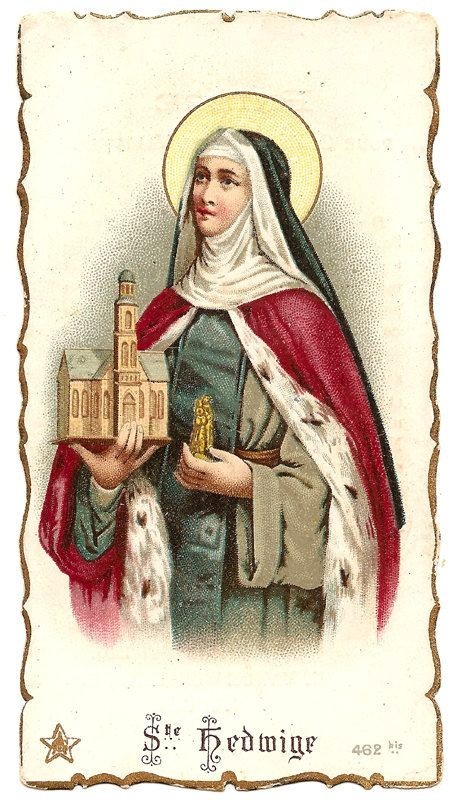
View On WordPress
11 notes
·
View notes
Text
The Church remember St. Elizabeth of Hungary, Princess.
Ora pro nobis.
Saint Elizabeth of Hungary (7 July 1207 – 17 November 1231 AD), also known as Saint Elizabeth of Thuringia or Saint Elisabeth of Thuringia, was a princess of the Kingdom of Hungary, Landgravine of Thuringia, Germany, and a greatly venerated Catholic saint who was an early member of the Third Order of St. Francis, by which she is honored as its patroness.
Elizabeth was married at the age of 14, and widowed at 20. After her husband's death she sent her children away and regained her dowry, using the money to build a hospital where she herself served the sick. She became a symbol of Christian charity after her death at the age of 24 and was canonized on 25 May 1235.
Elizabeth was the daughter of King Andrew II of Hungary and Gertrude of Merania. Her mother's sister was Hedwig of Andechs, wife of Duke Heinrich I of Silesia. Her ancestry included many notable figures of European royalty, going back as far as Vladimir the Great of the Kievan Rus. According to tradition, she was born in Hungary, possibly in the castle of Sárospatak on 7 July 1207 AD.
Elizabeth was brought to the court of the rulers of Thuringia in central Germany, to be betrothed to Louis IV, Landgrave of Thuringia (also known as Ludwig IV), a future union which would reinforce political alliances between the families.[a] She was raised by the Thuringian court and would have been familiar with the local language and culture.
In 1221 AD, at the age of fourteen, Elizabeth married Louis; the same year he was enthroned as Landgrave, and the marriage appears to have been happy.
In 1223 AD, Franciscan friars arrived, and the teenage Elizabeth not only learned about the ideals of Francis of Assisi, but started to live them. Louis was not upset by his wife's charitable efforts, believing that the distribution of his wealth to the poor would bring eternal reward; he is venerated in Thuringia as a saint, though he was never canonized by the Church.
It was also about this time that the priest and later inquisitor Konrad von Marburg gained considerable influence over Elizabeth when he was appointed as her confessor. In the spring of 1226 AD, when floods, famine, and plague wrought havoc in Thuringia, Louis, a staunch supporter of the Hohenstaufen Frederick II, Holy Roman Emperor, represented Frederick II at the Imperial Diet held in Cremona.
Elizabeth assumed control of affairs at home and distributed alms in all parts of their territory, even giving away state robes and ornaments to the poor. Below Wartburg Castle, she built a hospital with twenty-eight beds and visited the inmates daily to attend to them.
Elizabeth is perhaps best known for the miracle of the roses which says that whilst she was taking bread to the poor in secret, she met her husband Ludwig on a hunting party, who, in order to quell suspicions of the gentry that she was stealing treasure from the castle, asked her to reveal what was hidden under her cloak. In that moment, her cloak fell open and a vision of white and red roses could be seen, which proved to Ludwig that God's protecting hand was at work.
Her husband, according to the vitae, was never troubled by her charity and always supported it. In some versions of this story, it is her brother in law, Heinrich Raspe, who questions her. Hers is the first of many miracles that associate Christian saints with roses, and is the most frequently depicted in the saint's iconography.
Almighty God, by your grace your servant Elizabeth of Hungary recognized and honored Jesus in the poor of this world: Grant that we, following her example, may with love and gladness serve those in any need or trouble, in the name and for the sake of Jesus Christ; who lives and reigns with you and the Holy Spirit, one God, for ever and ever.
Amen.
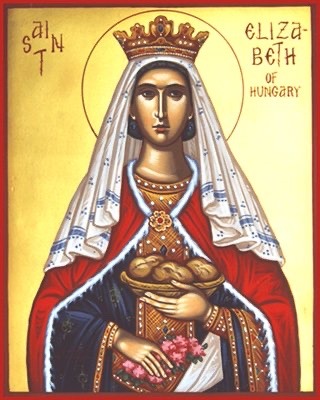
#father troy beecham#christianity#troy beecham episcopal#jesus#father troy beecham episcopal#saints#god#salvation#peace
6 notes
·
View notes
Photo
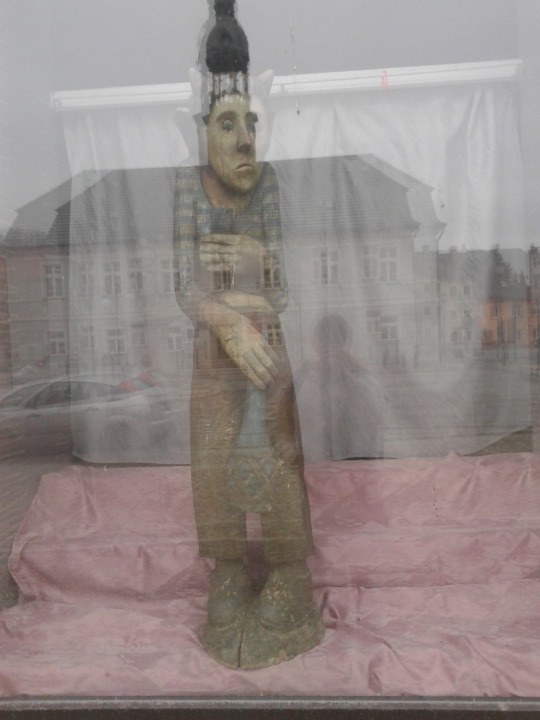









2nd batch I made a lot more but bad quality
and no i didnt edit those i dont care about it im too tired xD
2 notes
·
View notes
Text
BORN TO PRAISE
“We were predestined to praise His glory by being the first to hope in Christ.” —
Ephesians 1:12
We are tailor-made for praising God. Our voices are for singing. Our hands, eyes, and hearts are made just right to be lifted up to the Lord. With our feet we can dance before the Lord (2 Sm 6:14). Our entire bodies can be offered “as a living sacrifice holy and acceptable to God, your spiritual worship” (Rm 12:1). Our minds and emotions can be trained and inspired to make music unto the Lord and to articulate our love for Him in words.
We are born to praise the Lord, or more precisely, re-born to praise Him. Almost all our other activities will pass away. Soon we will not be preaching, teaching, healing, working, and suffering. However, we will always be praising. Praise is the eternal activity.
So don’t be afraid to praise Him. “There is nothing concealed that will not be revealed, nothing hidden that will not be made known. Everything you have said in the dark will be heard in the daylight; what you have whispered in locked rooms will be proclaimed from the rooftops” (Lk 12:2-3). Even the quiet, hidden workings of God will be proclaimed. You will be the one to proclaim them.
In the end, every knee will bend, and every tongue proclaim that Jesus Christ is Lord (Phil 2:10-11). So why wait? Praise Him now. Make praise your priority. Isn’t that what life, and eternal life, are all about? The Lord is worthy to be praised (Rv 5:12). The old spiritual says: “I don’t know what you came to do, but I came to praise the Lord.”
Prayer: By the power of the Spirit, may I bless the Lord at all times; may His praise be ever in my mouth (Ps 34:2).
Promise: “The hairs of your head are counted! Fear nothing, then. You are worth more than a flock of sparrows.” —Lk 12:7
Praise: As Duchess of Silesia (now Poland), St. Hedwig never let the trappings of nobility affect her piety. Through gentle fortitude, she wielded much influence over secular affairs.
0 notes
Text
The following reflection is courtesy of Don Schwager © 2020. Don's website is located at Dailyscripture.net
Meditation: What does leaven have to do with hypocrisy? To the Jews leaven was a sign of evil. It was a piece of dough from left-over bread which fermented. Fermentation was associated with decay and rotting - the state of foul-smelling decomposition. Why did Jesus warn his disciples to avoid the ways of the Pharisees? The Pharisees wanted everyone to recognize that they were pious and good Jews because they meticulously and scrupulously performed their religious duties. Jesus turned the table on them by declaring that outward appearance doesn't always match the inward intentions of the heart. Anyone can display outward signs of goodness while inwardly harboring evil thoughts and intentions.
God's light exposes darkness and transforms our minds and hearts
The word hypocrite means actor - someone who pretends to be what he or she is not. But who can truly be good, but God alone? Hypocrisy thrives on making a good appearance and masking what they don't want others to see. The good news is that God's light exposes the darkness of evil and sin in our hearts, even the sin which is unknown to us. And God's light transforms our hearts and minds and enables us to overcome hatred with love, pride with humility, and pretense with integrity and truthfulness. God gives grace to the humble and contrite of heart to enable us to overcome the leaven of insincerity and hypocrisy in our lives.
Godly fear draws us to God's love and truth
What does fear have to do with the kingdom of God? Fear is a powerful force. It can lead us to panic and flight or it can spur us to faith and action. The fear of God is the antidote to the fear of losing one's life.
"I sought the Lord, and he answered me, and delivered me from all my fears... O fear the Lord, you his saints, for those who fear him have no want! ..Come, O sons, listen to me, I will teach you the fear of the Lord." (Psalm 34:4,9,11)
What is godly fear? It is reverence for the One who made us in love and who sustains us in mercy and kindness. The greatest injury or loss which we can experience is not physical but spiritual - the loss of one's soul and life to the power of hell. A healthy fear of God leads to spiritual maturity, wisdom, and right judgment and it frees us from the tyranny of sinful pride, deceit, and cowardice - especially in the face of evil, falsehood, and deception. Do you trust in God's grace and mercy and do you submit to his life-giving word of truth and righteousness (moral goodness)?
"Lord Jesus, may the light of your word free my heart from the deception of sin and consume me with a burning love for your truth and righteousness."
The following reflection is from One Bread, One Body courtesy of Presentation Ministries © 2020.
BORN TO PRAISE
“We were predestined to praise His glory by being the first to hope in Christ.” —Ephesians 1:12
We are tailor-made for praising God. Our voices are for singing. Our hands, eyes, and hearts are made just right to be lifted up to the Lord. With our feet we can dance before the Lord (2 Sm 6:14). Our entire bodies can be offered “as a living sacrifice holy and acceptable to God, your spiritual worship” (Rm 12:1). Our minds and emotions can be trained and inspired to make music unto the Lord and to articulate our love for Him in words.
We are born to praise the Lord, or more precisely, re-born to praise Him. Almost all our other activities will pass away. Soon we will not be preaching, teaching, healing, working, and suffering. However, we will always be praising. Praise is the eternal activity.
So don’t be afraid to praise Him. “There is nothing concealed that will not be revealed, nothing hidden that will not be made known. Everything you have said in the dark will be heard in the daylight; what you have whispered in locked rooms will be proclaimed from the rooftops” (Lk 12:2-3). Even the quiet, hidden workings of God will be proclaimed. You will be the one to proclaim them.
In the end, every knee will bend, and every tongue proclaim that Jesus Christ is Lord (Phil 2:10-11). So why wait? Praise Him now. Make praise your priority. Isn’t that what life, and eternal life, are all about? The Lord is worthy to be praised (Rv 5:12). The old spiritual says: “I don’t know what you came to do, but I came to praise the Lord.”
Prayer: By the power of the Spirit, may I bless the Lord at all times; may His praise be ever in my mouth (Ps 34:2).
Promise: “The hairs of your head are counted! Fear nothing, then. You are worth more than a flock of sparrows.” —Lk 12:7
Praise: As Duchess of Silesia (now Poland), St. Hedwig never let the trappings of nobility affect her piety. Through gentle fortitude, she wielded much influence over secular affairs.
Reference:
Rescript: "In accord with the Code of Canon Law, I hereby grant the Nihil Obstat for One Bread, One Body covering the period from October 1, 2020 through November 30, 2020. Most Reverend Joseph R. Binzer, Auxiliary Bishop, Vicar General, Archdiocese of Cincinnati, Cincinnati, Ohio February 25, 2020"
The Nihil Obstat ("Permission to Publish") is a declaration that a book or pamphlet is considered to be free of doctrinal or moral error. It is not implied that those who have granted the Nihil Obstat agree with the contents, opinions, or statements
0 notes
Text
Awesome women list (fav ladies of mine)
Hypatia of Alexandria ( greek philosope, inventor of astrolabium, was killed by mad christian mob)
Agnodice ( a greek physician, who practiced in male disguise in times where women were more or less a part of the houshold inventary)
Murasaki Shikibu ( author of the worlds first novel, “Tale of Genji”)
Ada Lovelace (mathematical genius, first programmer)
Mary the Jewess ( the legendary first western alchemist, legendary inventor of the Bain Marie)
Marie Skłodowska- Curie
Sappho
Himiko ( the legendary japanese shaman- princess)
Colette
Christine de Pizan ( a medieval writer, author of feminist books like “The book of city of ladies”)
st Hildegard of Bingen ( a medieval medicine genius)
Inanna ( babylonian goddess of love and war; the origional archetype of a killed and hanged nacked god who ressurected ( so to say the original Jesus)
Beatrice of Egypt ( an legendary egyptian princess who got married to a waoman called Mesophotamia)
Santa Muerte
Marry Shelly ( the inventor of the sci fi genere)
st Hedwig of Silesia
Maria Cunitz( a silesian medieval astronomer)
Merit Ptah ( the fist woman physician thats known by name in history)
st Willgefortis also called st Kummerniss ( a quite genderqueerlooking silesian unofficail saint)
st Gertrude of Nivelles (the patron saint of cats and ppl afraid of muse)
Adelajda Biała Knegini ( a half- legendary polish princess, then ungarn princess, she was one hell of a woman)
Florence Nightingale/ “ the lady with the lamp” (founder of modern nursing)
st Barbara, st Margaret, st Catarina ( christian versions of the three rodzanice (slavic version of the greek three Moirai or the tripple goddes)
Maria Göppert-Mayer - the only silesian woman noble price winner( field; physics). second woman who got the noble price after Maria Skłodowska Curie)
Sei Shonagon ( a queer japanese medieval writer)
Anna Laszuk ( polish reporter, lesbian)
Rosalind Franklin
4 notes
·
View notes
Text
St Hedwig of Silesia: The Duchess Who Walked Barefoot ~ A guest post by Katrzyna Ogrodnik-Fujcik
St Hedwig of Silesia: The Duchess Who Walked Barefoot ~ A guest post by Katrzyna Ogrodnik-Fujcik
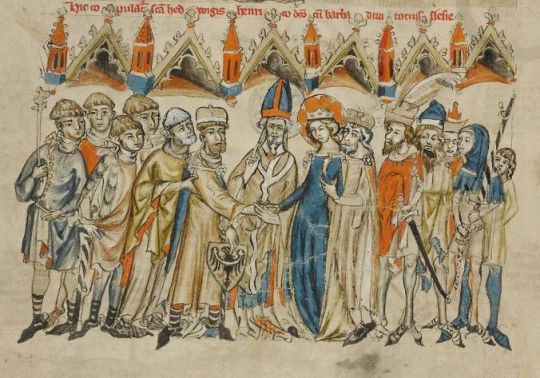
The wedding of Hedwig and Henry the Bearded. Hedwig’s Codex, 1353. Wikimedia Commons
Duke Henry was irritated. A pious and religious man himself, he could not bear the sight of his beloved wife attending mass and performing all her noble deeds barefoot. She could be a shining example of both genuine and active faith, but she should not forget she was his duchess too. For the sake of her family…
View On WordPress
#Agnes of Meran#Duke Boleslaw#Duke Boleslaw the Tall#Duke Henryk#Frederick Barbarossa#Henry the Bearded#Henry the Pious#Henryk the Bearded#Henryk the Pious#Hohenstaufen#House of Piast#House of Wettin#King Philip II Augustus of France#medieval history#medieval Polish history#Polish history#Queen Gertrude of Hungary#Saint Hedwig#Silesia#Trezbnica#Wleń Castle
0 notes
Text
This princess saint was not Harry Potter’s owl: St. Hedwig of Silesia
http://dlvr.it/RGKfsD
0 notes
Photo
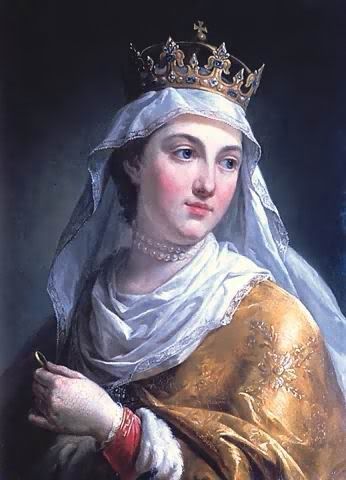
ST. HEDWIG, duchess of Silesia https://www.pinterest.se/pin/149955862563820986/
0 notes
Text
Memorials of the Saints - 16 October
Memorials of the Saints – 16 October
St Hedwig of Silesia (1174-1243) (Optional Memorial)
St Margaret Mary Alacoque VHM (1647-1690) (Optional Memorial)
Biography here:
https://anastpaul.wordpress.com/2017/10/16/saint-of-the-day-16-october-st-margaret-mary-alacoque-1647-1690-v-h-m/
St Amandus of Limoges
St Ambrose of Cahors
Bl Anicet Koplinski
Bl Augustine Thevarparampil
View On WordPress
1 note
·
View note